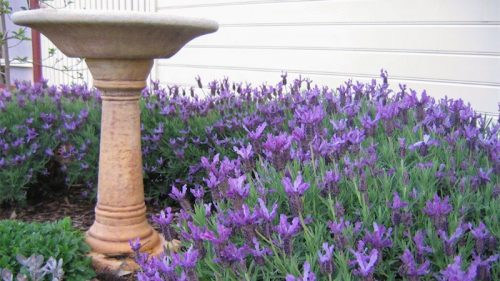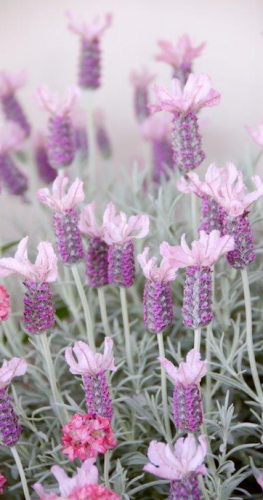
To this day lavender, still one of the world’s most popular plants, is used for perfume, mostly as the main base ingredient.

Confusingly, with crosses between different varieties, there are possibly thousands of lavender varieties. In Australia there are more than 300 varieties.
Plant Growers Australia has just announced two new varieties of French lavender for spring, bred at its Victorian nursery where 14 other lavenders have been developed over the last few years.
French lavenders are the earliest to flower in late winter to early spring, so now is a good time to plant them.
They are followed by the vast range of English lavenders flowering in summer and autumn, thus providing flowers for six months of the year.
PGA’s Lavandula pendunculata “Ghostly Princess” is its full title. The name aptly describes this lavender, especially when seen in flower through an early morning mist.
Lavandula stoechas “Winter Lace” is the second PGA release with the traditional rich purple/violet flowers. It is a tight, compact lavender also flowering late winter into spring.

There is some confusion as to the ideal time to pick lavender flowers for making pot-pourri, lavender bags to keep out insect pests such as silver fish in clothes or having under the pillow for relief of headaches.
Often the flowers are picked when they are dry on the long stalks at the end of the season, by which time most of the fragrance has gone and even the bees have abandoned them.
The ideal time is just as the flowers are about to open when the fragrance is at its peak. But for anyone wanting to also enjoy the flowers, I suggest not only a combination of French and English lavenders, but plant several groups of each. Keep one group for the flowers and the other for cutting just as they come into flower. This offers the best of both worlds. Naturally, picking the flowers as they are about to open will take longer to dry.
DAYLIGHT arriving a few minutes earlier every day reminds us the official start of spring is just around the corner on September 1. Astronomically, the spring equinox is the start of spring, which occurs in Canberra on Friday, September 23, at 12.21am. But for most gardeners, October 1 is considered the start of spring.
Jottings…
- Repot neglected house pots.
- Finish pruning hydrangeas, taking out old wood and cutting back to three-four leaf joints from the base of the plant.
- At month’s end, start rejuvenating lawns by coring while the ground is soft, followed by a feed. Paul Howard does this work, call 6231 2920.
- A reminder, no pruning of deciduous trees between September 1 and the end of October when the sap is rising or they will bleed profusely.
- After pruning roses, spray with lime sulphur for scale insects and other pests.
Who can be trusted?
In a world of spin and confusion, there’s never been a more important time to support independent journalism in Canberra.
If you trust our work online and want to enforce the power of independent voices, I invite you to make a small contribution.
Every dollar of support is invested back into our journalism to help keep citynews.com.au strong and free.
Thank you,
Ian Meikle, editor




Leave a Reply